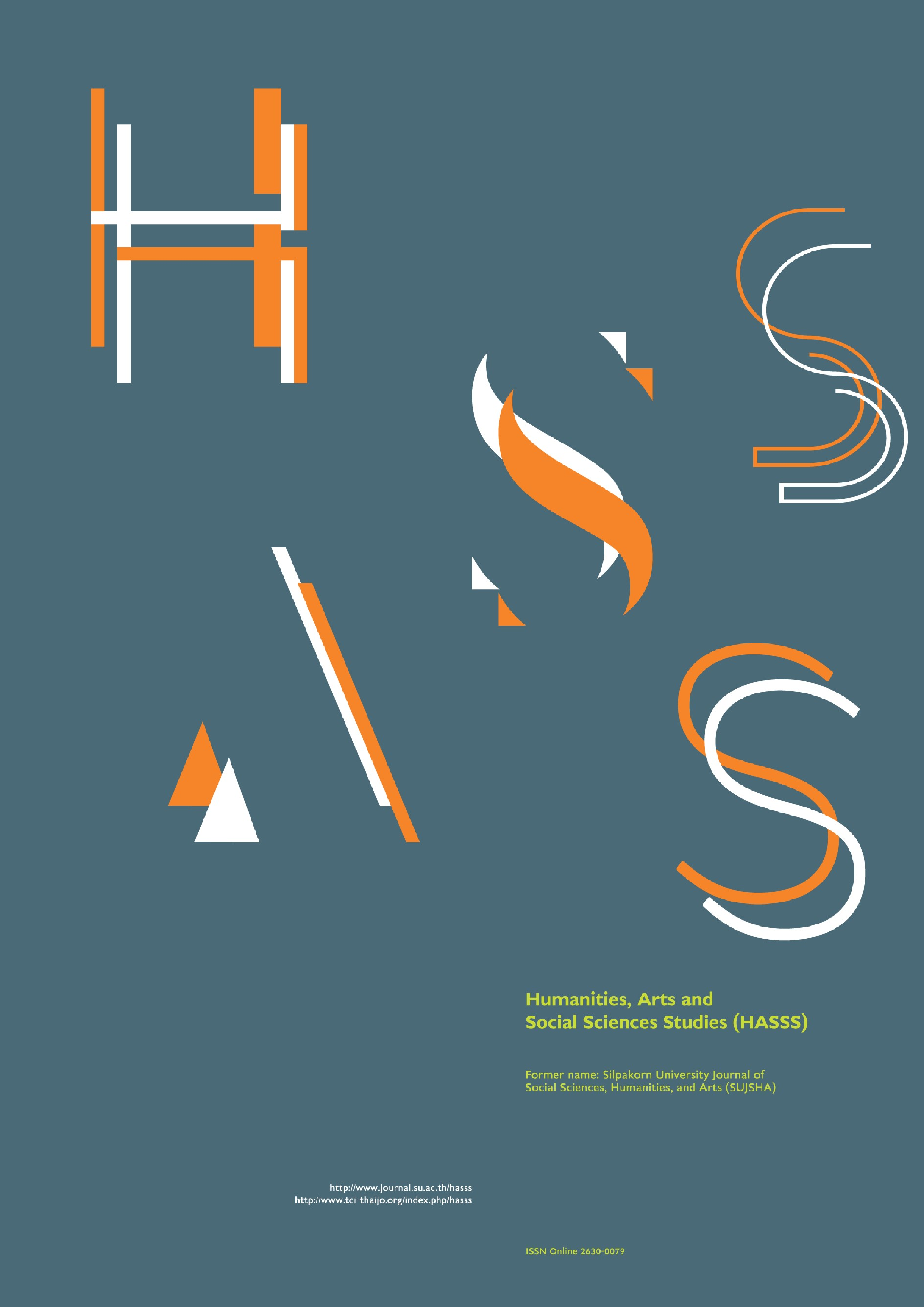Relationships, unity and strength of Pak Nam Pho’s Taonang
Main Article Content
Abstract
This article was compiled to gather the basic knowledge and understanding of necessary information for designing creative works of visual arts from cultural studies related to the Chinese-Thai community in Pak Nam Pho district, Nakhon Sawan province, Thailand. Data were obtained from literature reviews together with field repositories by interviewing representatives of the successors in Chinese cultural activities. This article aims to research the process of recruiting, operating, and allocating positions for Pak Nam Pho’s Taonang, a traditional organizing committee, during the Chinese New Year festival by interviewing members of the Taonang and a representative from the Chinese Cultural Association of Pak Nam Pho, one of the biggest Chinese communities in Thailand. The Taonang consists of people of different ages, genders, and occupations who are approachable representatives of society and collaborate respectfully with other organizations. The recruitment and selection system of Pak Nam Pho’s Taonang committee does not limit the right of membership to only Chinese descendants or Chinese cultural successors, but rather, extends to Thai-Buddhists as well as other demographics in the Pak Nam Pho area. In short, each year, this system encourages diversity among Taonang members by shifting the processes of qualification away from racial requirements toward membership through spatial requirements, which has impacted how the Chao Pho-Chao Mae Pak Nam Pho Parade adjusts itself with every generation of Pak Nam Pho members. It is not surprising that the event tends to develop gradually year by year, however, these are still relatively minor details, allowing ancient traditions to remain at the core.
Downloads
Article Details

This work is licensed under a Creative Commons Attribution-NonCommercial-NoDerivatives 4.0 International License.
All rights reserved. Apart from citations for the purposes of research, private study, or criticism and review,no part of this publication may be reproduced, stored or transmitted in any other form without prior written permission by the publisher.
References
Dinfa, P. (2013). Prapheni hae Chao Pho-Chao Mae Pak Nam Pho kab phon ti mi to kandamrongchiwit khong chao thai chuasai chin tambon Pak Nam Pho amphoe Mueang changwat Nakhon Sawan [Tradition of Chao Pho-Chao Mae Pak Nam Pho procession and its effects on the lives of Thai-Chinese people, Pak Nam Pho Sub-district, Mueang District, Nakhon Sawan Province]. Ganesha Journal, 9(1), 129–142. [in Thai]
Kanokpongchai, S. (2007). Withi chin-thai nai sangkhom siam [The Chinese-Thai way in Siam Society]. Matichon. [in Thai]
Kon Thai kap Tessakan Trut-chin [Thai people and Chinese New Year festival] [2023, March 26]. NIDA. https://nidapoll.nida.ac.th/survey_detail?survey_id=471https://nidapoll.nida.ac.th/survey_detail?survey_id=471
Nua-amnat, R., & Brahmakappa, A. (2020). 103 years ago; The conflict of the continuing of Parknampho Chinese deities traditional parade. Journal of Crime and Security, 2(1), 59–72. [in Thai]
Pan, L. (1997). Sons of the yellow emperor: The story of the overseas Chinese (K. Tejapira, Trans.). Khobfai. [in Thai]
Prommas, T., & Sinthumal, W. (2017). Kwam plianplaeng thang setthakit lae sankhom khong lummaenam nan BE 2598-2504 [Economic and social changes of the Nan River Basin, AD 1855–1961]. In P. Teanpewroj (Ed.), The economic and social transformation of Thailand a collection of research paper, No. 2 (pp. 57–90). The Thailand Research Fund (TRF). [in Thai]
Sathiensut, L. (1973). Prawat watthanatham chin [History of Chinese culture] (2nd ed.). The Social Science Association of Thailand (SSAT). [in Thai]
Songprasert, P. (2004). Chin phon thale samai mai [Modern overseas Chinese]. The Thailand Research Fund (TRF). [in Thai]
Suksamran, S. (1987). Kwamchuea thang satsana lae phithikam khong chumchon chaochin [Religious beliefs and rituals of the Chinese Community]. Research Affairs, Chulalongkorn University. [in Thai]


